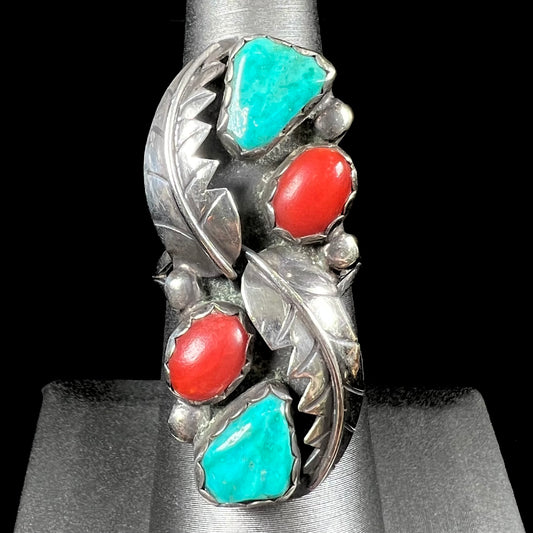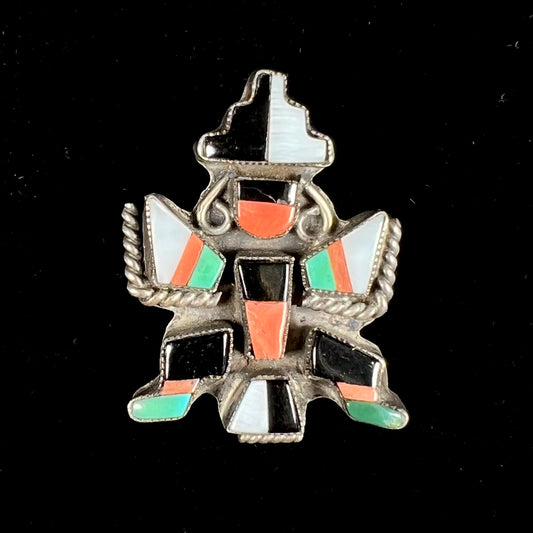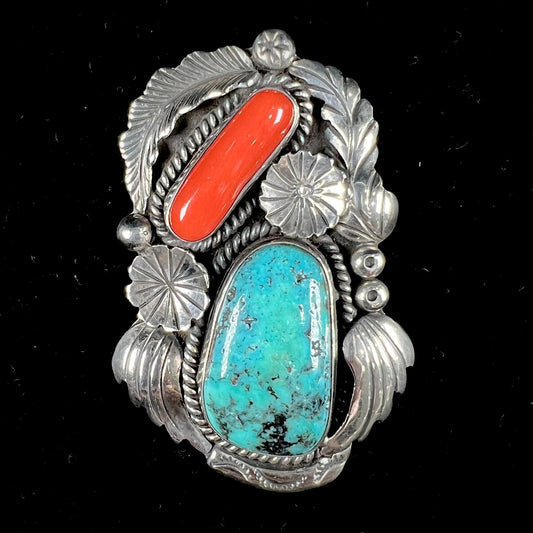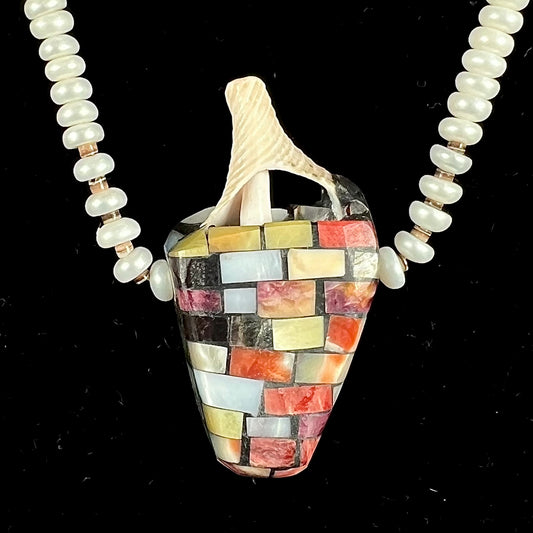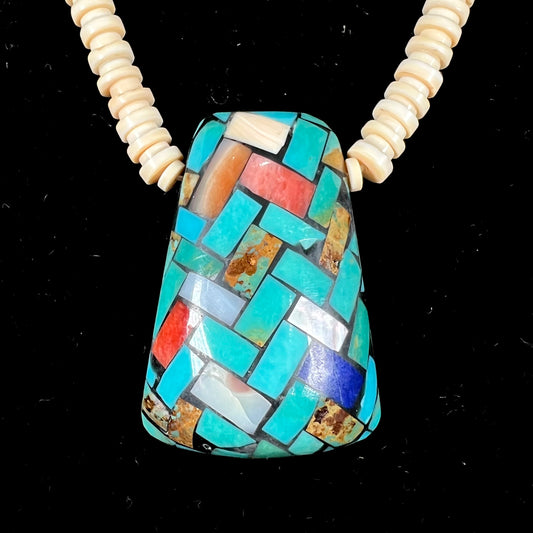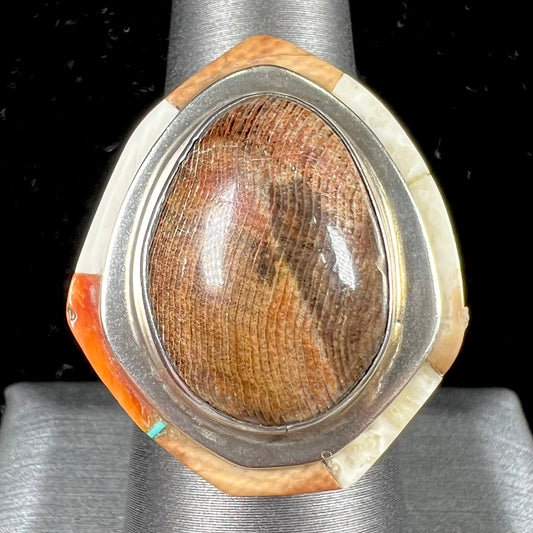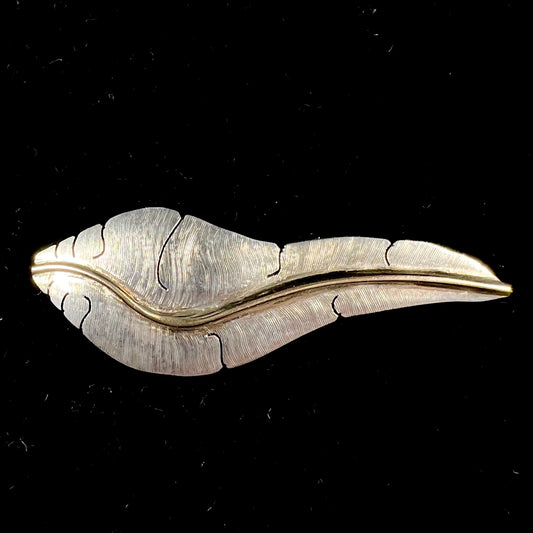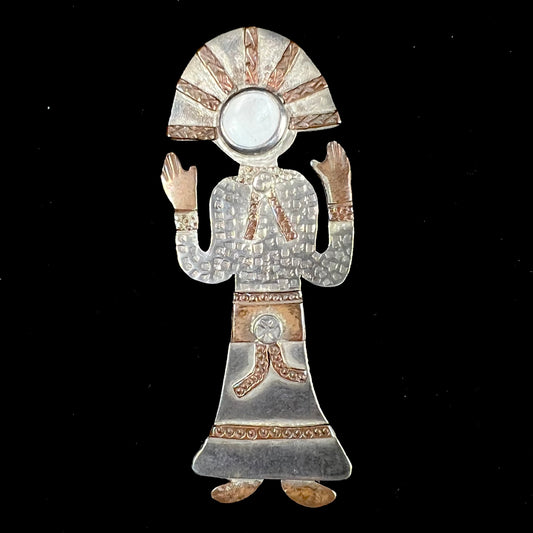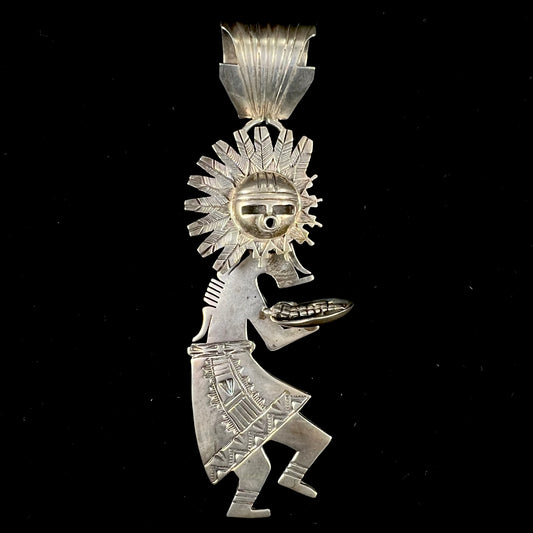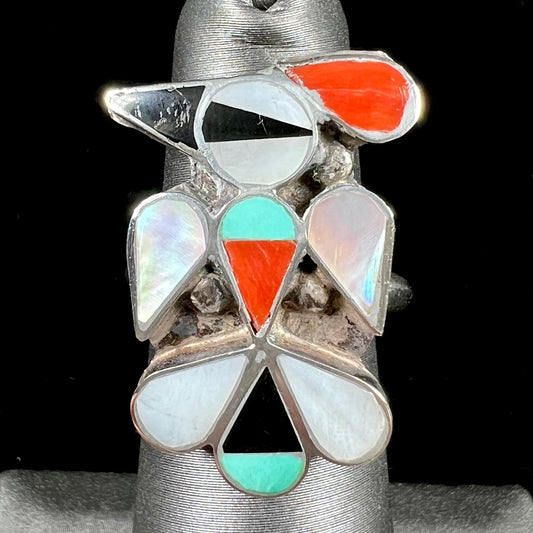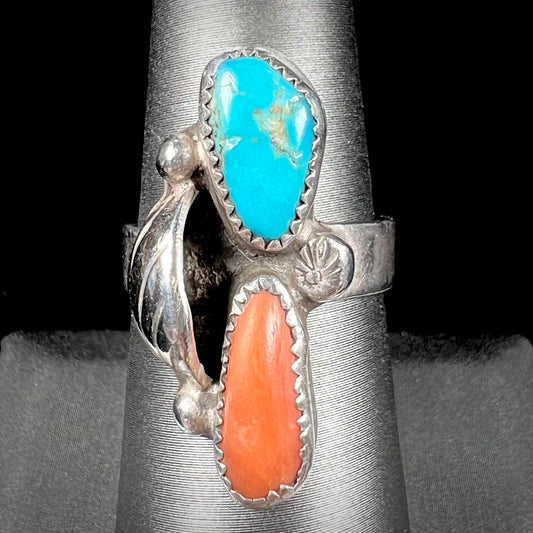Burton's Gems and Opals
Modified Squash Blossom Necklace | Sterling Silver | Vintage c.1950's
Modified Squash Blossom Necklace | Sterling Silver | Vintage c.1950's
Couldn't load pickup availability
A Bit About The Piece:
Vintage Navajo squash blossom necklace set with Fox and Sonoran turquoise. See wear report.
Details, details...
The Stones: Turquoise
- 15 freeform cabochon cuts
- varieties include:
- in squash blossom: Fox (Lander County, Nevada)
- in necklace: Sonoran (Sonora, Mexico)
- natural color
- stabilized
The Necklace: Handmade, Modified Squash Blossom Necklace
- .925 sterling silver, solid
- handmade silver beads
- chain length: 30 inches
- average bead millimeter: 8.96mm
- approximate centerpiece measurements: 3.75" x 3.5"
- necklace weight: 262.63 grams
- signed on back of many pieces with maker's mark "M"
- circa 1950's
Wear Report
Sonoran turquoise in necklace does not appear to be original, and instead a later modification. Some beads also appear to be missing near clasp. Piece arrived to us in its current state and has been thoroughly checked.
About Turquoise:
What once was regarded a common byproduct of copper mining is now realized to be a rather scarce gem. Typically found in or near copper mines around the world, turquoise from each locality differs in color, quality, character, and rarity. Certain mines are known for producing highly valuable material in very limited quantity. Inclusions of other copper-bearing minerals such as azurite, malachite, and chrysocolla are not uncommon.
Turquoise ranks 5 to 6 on the Mohs scale of hardness. Because this is often not suitable for everyday wear, most turquoise on the market is hardened (or "stabilized") with electricity and/or polymer. Stabilization is viewed as an accepted, regular practice in the lapidary industry and is not to be confused with "dying" material. Dyed (or artificially colored) material is not viewed as favorably among dealers and collectors. It is very important to be careful when cleaning your turquoise jewelry. Turquoise is a porous stone that can absorb any harsh chemical used. Avoid putting your turquoise jewelry in chemical jewelry cleaners, and be sure to focus only on cleaning the metal around your stone.
Share


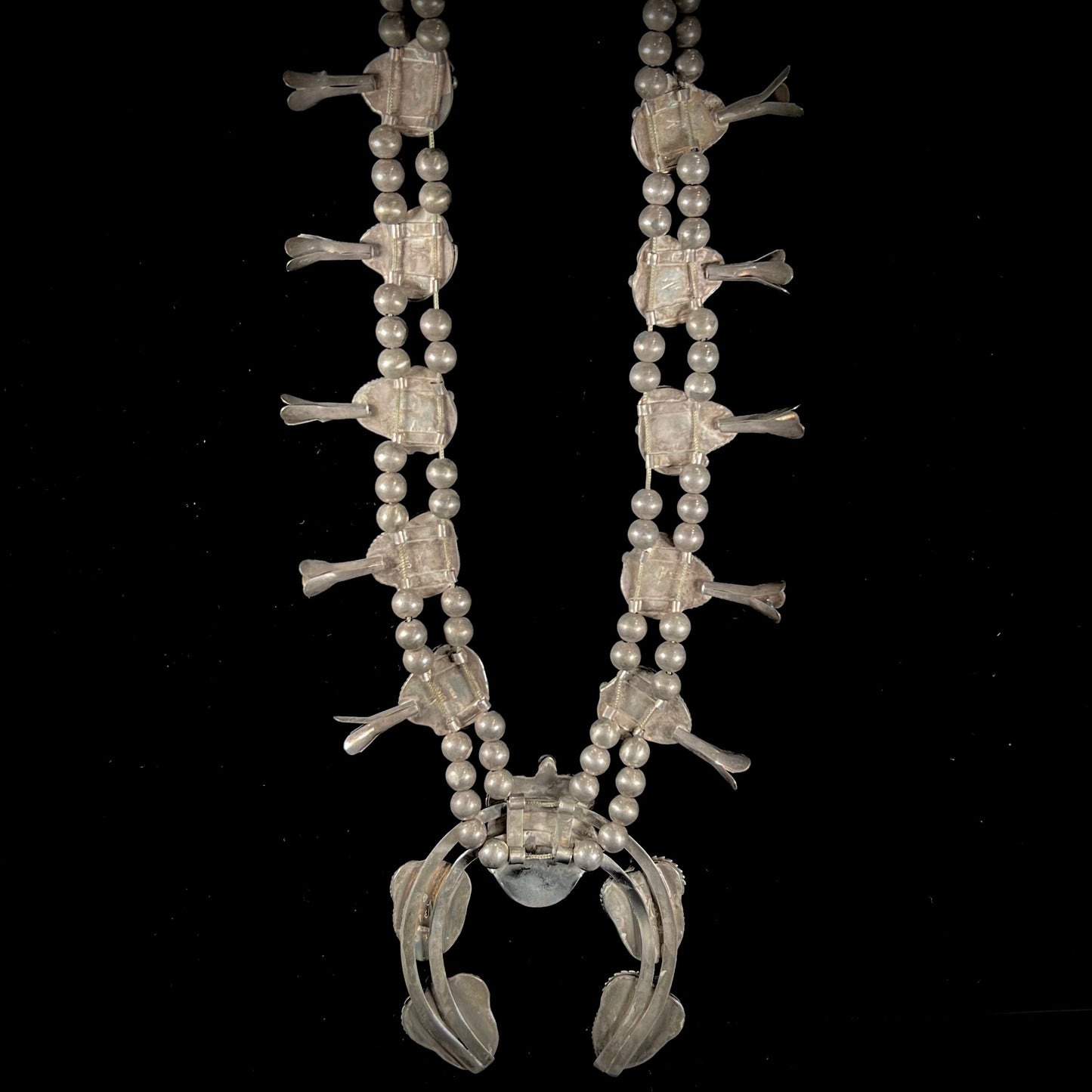

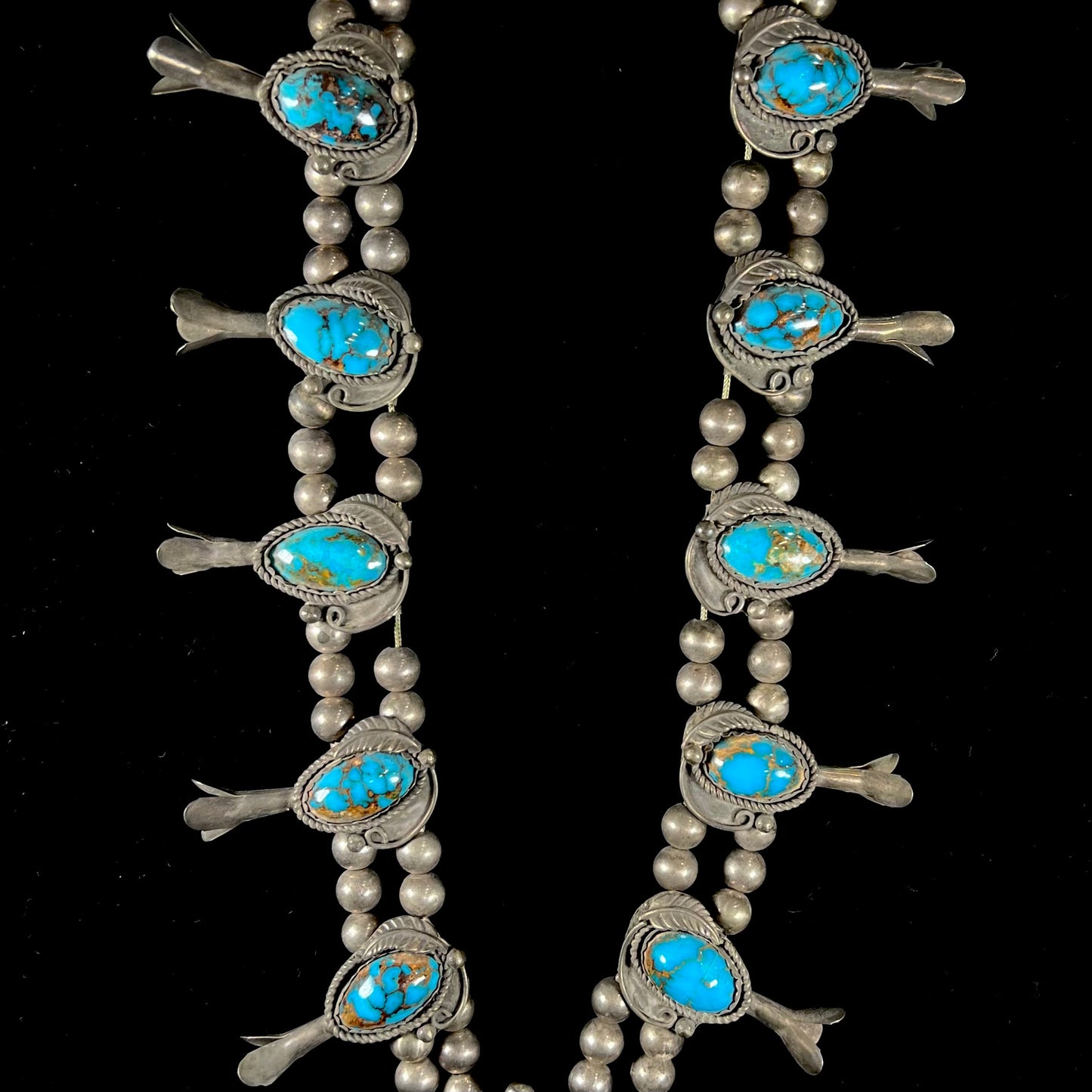
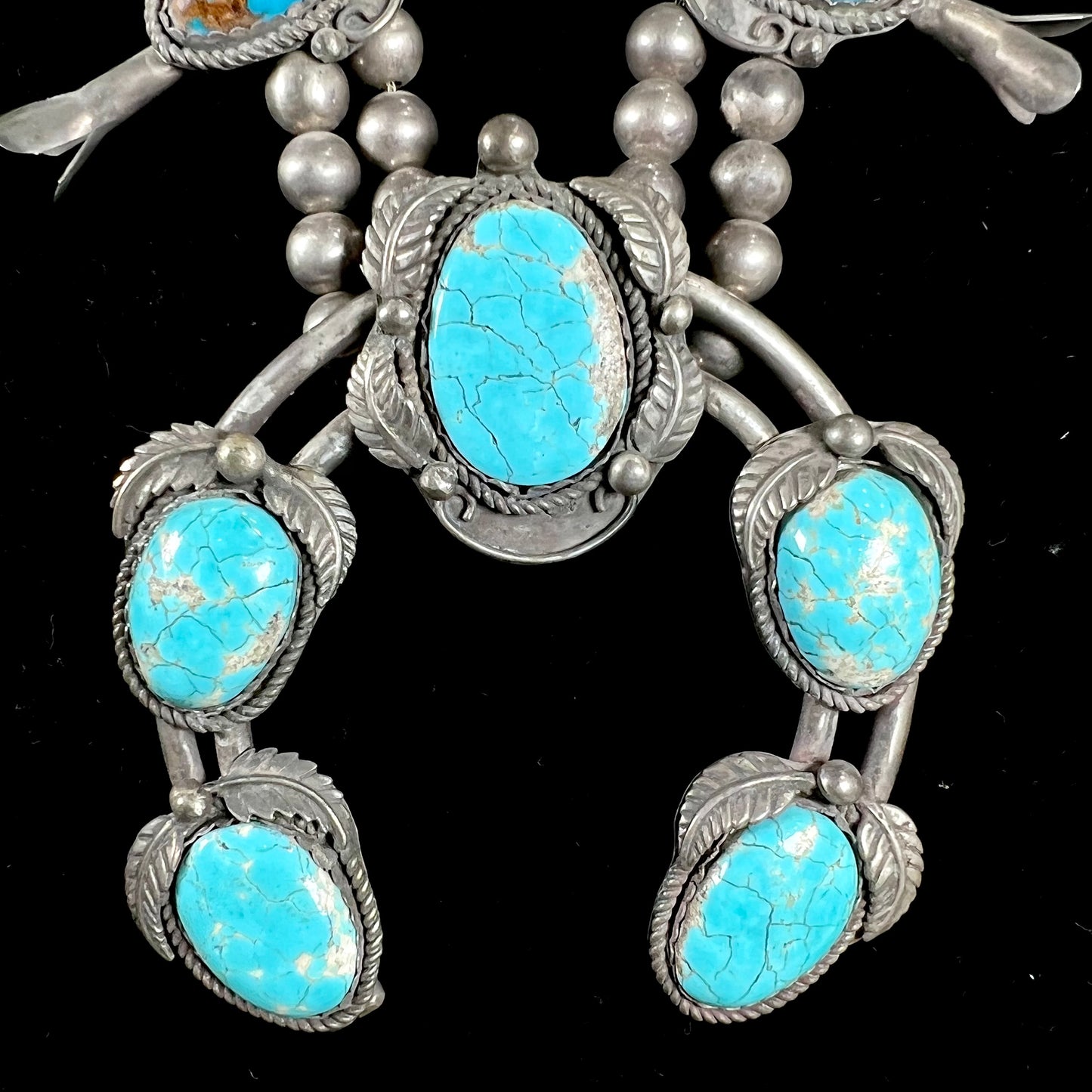



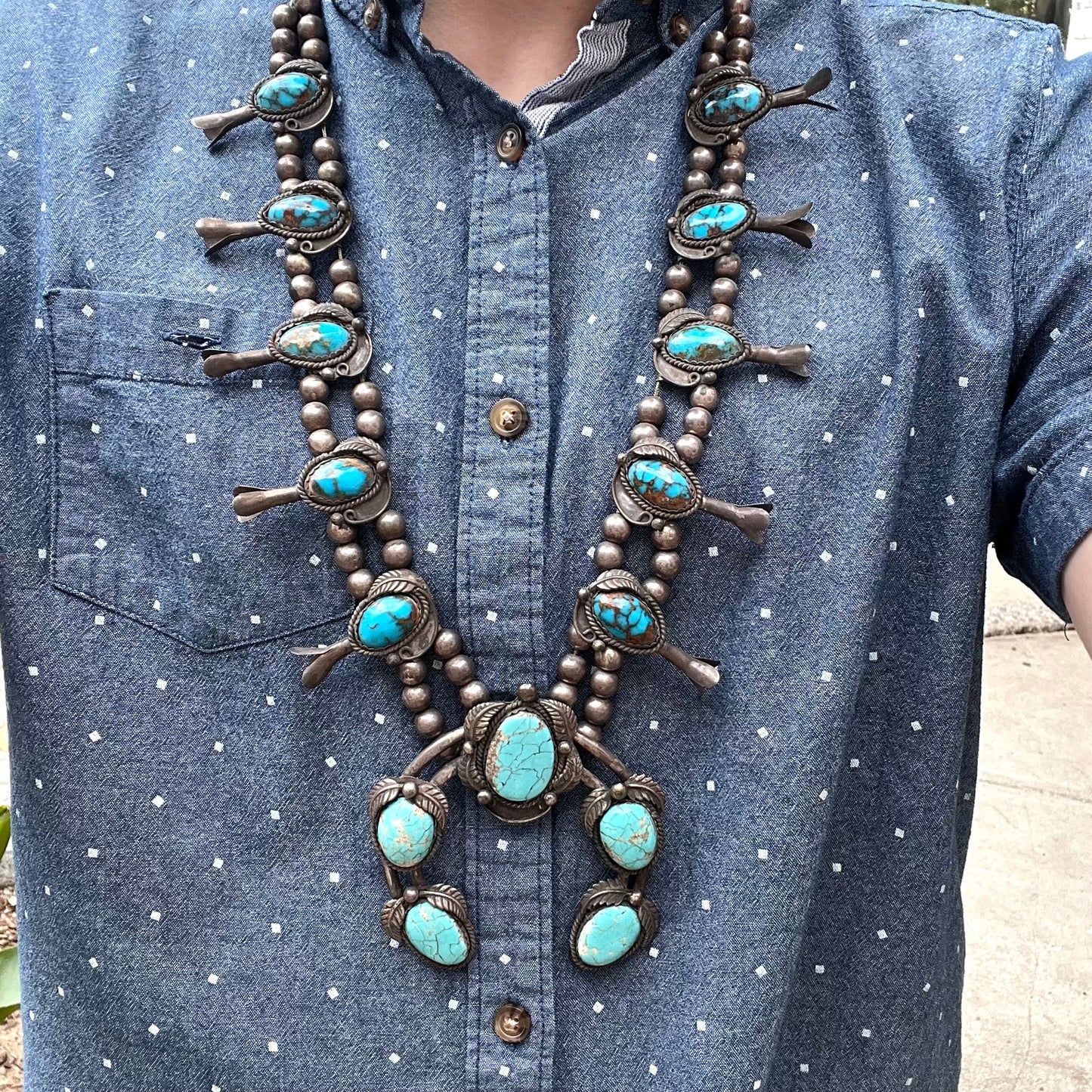

Collapsible content
Shipping, Handling, & Inventory
Your order will be processed and shipped within 4 business days. All shipments are insured by the United States Postal Service, and most orders of $500 or more will require signature confirmation upon delivery.
While we work hard to present our online customers with accurate inventory availability, we reserve the right to cancel and refund a sale if the item is sold somewhere else first.
Wanna Closer Look?
Don't be shy! We're always happy to provide additional photos and videos any time. Just shoot us a quick message, and we'll get back to you.
Tour the Southwest
-
"Miriam Chuyate" Hopi Turquoise & Coral Ring in Sterling Silver | Vintage c.1960's
Regular price $435.00 USDRegular priceUnit price / per -
Zuni Knifewing Inlay Brooch in Sterling Silver | Vintage c.1970's
Regular price $145.00 USDRegular priceUnit price / per -
"Angela Lee" Navajo Turquoise & Coral Pendant | Sterling Silver | Vintage c.1970's
Regular price $465.00 USDRegular priceUnit price / per -
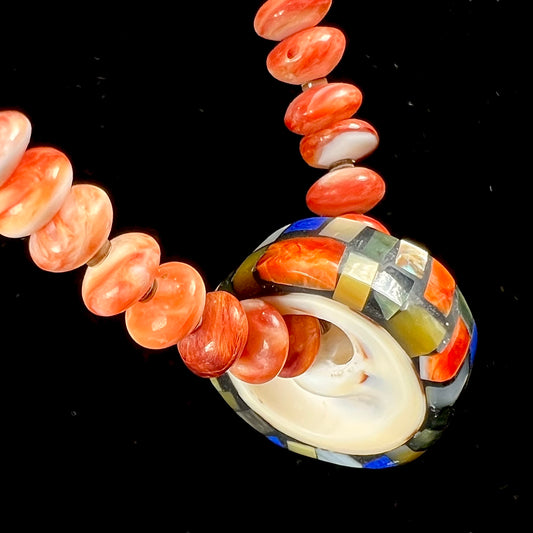
"Charlene Reano" Mosaic Inlaid Seashell Necklace on Spiny Oyster | Sterling Silver | Estate c.2000's
Regular price $475.00 USDRegular priceUnit price / per$475.00 USDSale price $475.00 USD -
"Charlene Reano" Mosaic Inlaid Seashell Necklace on Pearls | Sterling Silver | Estate c.2000's
Regular price $465.00 USDRegular priceUnit price / per$465.00 USDSale price $465.00 USD -
"Charlene Reano" 3D Mosaic Stone Inlay Necklace on Puka Shells | Sterling Silver | Estate c.2000's
Regular price $570.00 USDRegular priceUnit price / per$570.00 USDSale price $570.00 USD -
"Benny Armijo"(?) Petrified Wood Inlay Ring | Sterling Silver | Vintage c.1970's
Regular price $295.00 USDRegular priceUnit price / per$295.00 USDSale price $295.00 USD -
"Michael Kirk" Isleta Feather Pin | Sterling Silver & 14kt | Vintage c.1970's
Regular price $190.00 USDRegular priceUnit price / per$190.00 USDSale price $190.00 USD -
Navajo Shaman Pendant | Sterling Silver | Estate
Regular price $280.00 USDRegular priceUnit price / per$280.00 USDSale price $280.00 USD -
“Bennie Ration” Navajo Sunface Kachina Pendant | Sterling Silver | Vintage c.1970's
Regular price $570.00 USDRegular priceUnit price / per$570.00 USDSale price $570.00 USD -
Zuni Thunderbird Inlay Ring in Sterling Silver | Vintage c.1970's
Regular price $360.00 USDRegular priceUnit price / per -
Navajo Turquoise & Pink Coral Ring | Sterling Silver | Vintage c.1970's
Regular price $135.00 USDRegular priceUnit price / per












